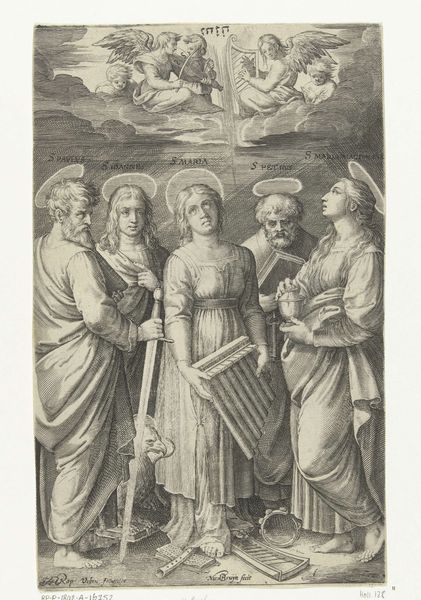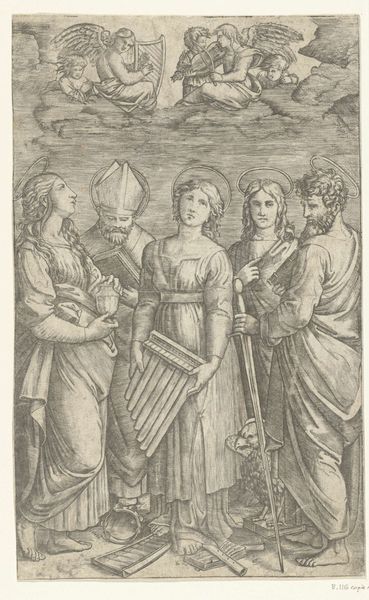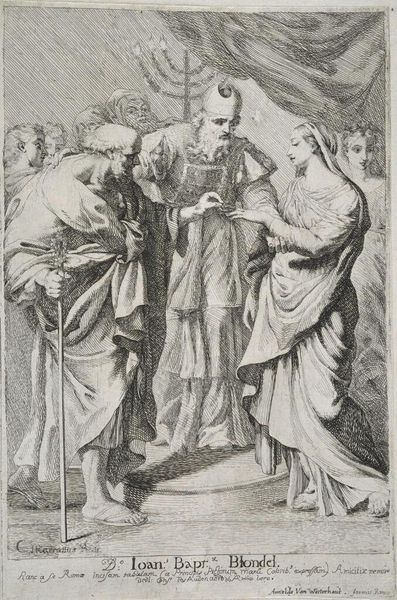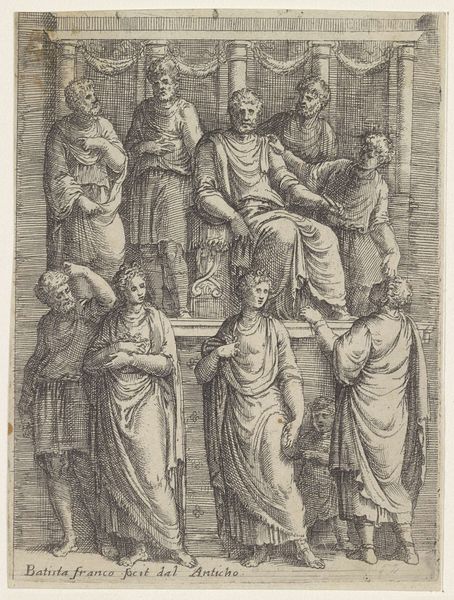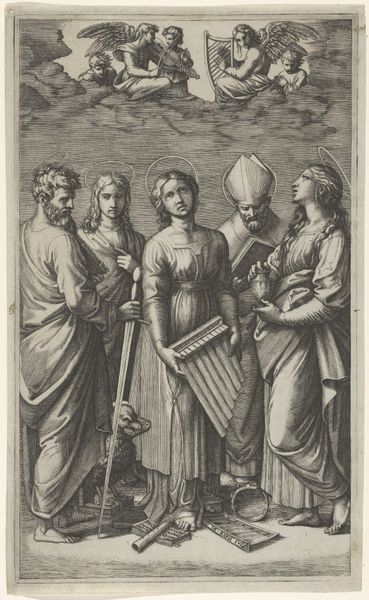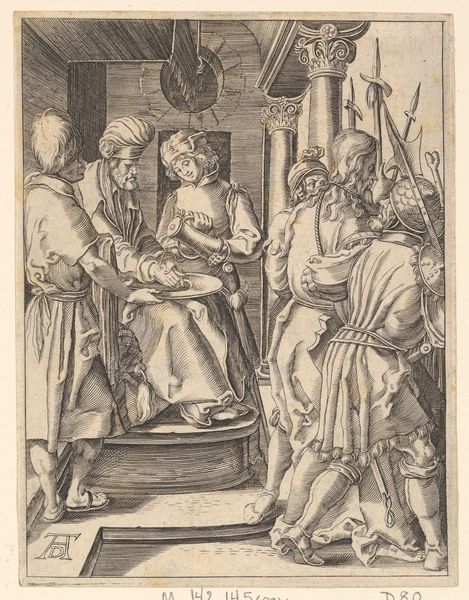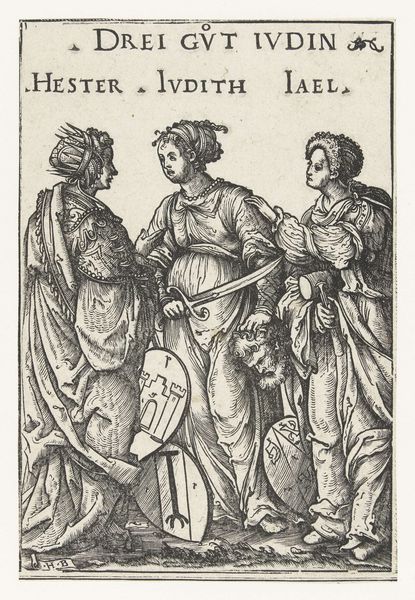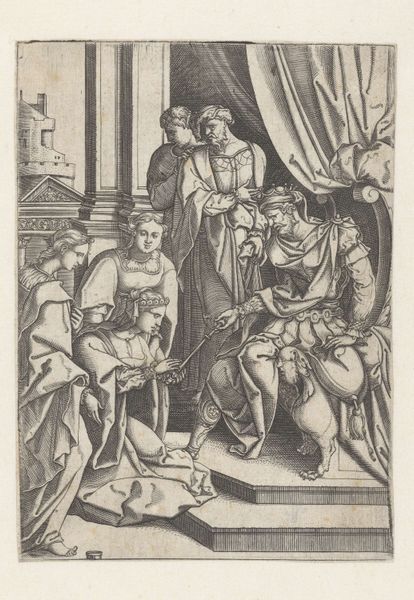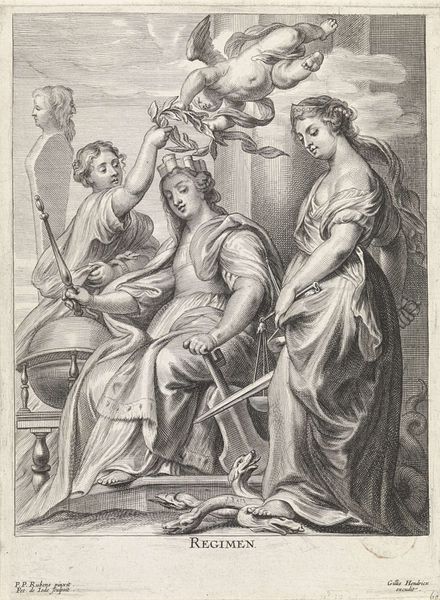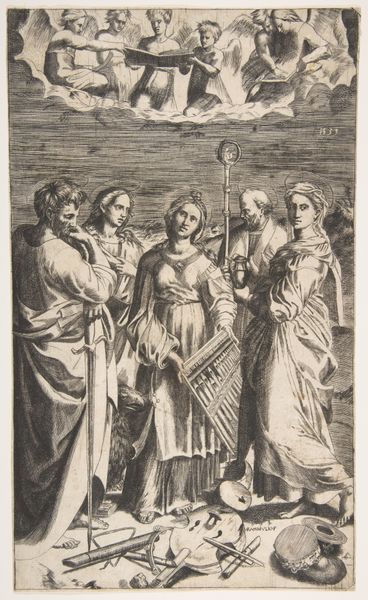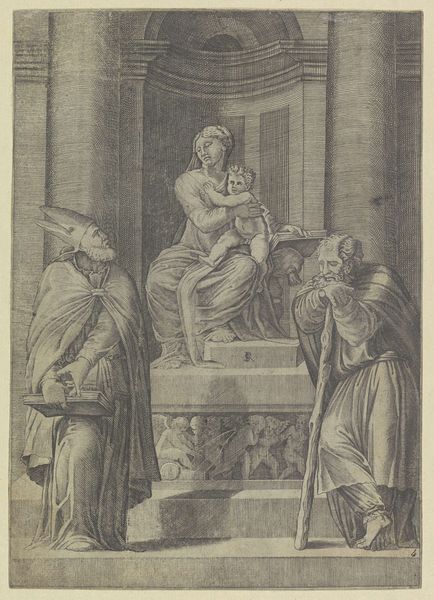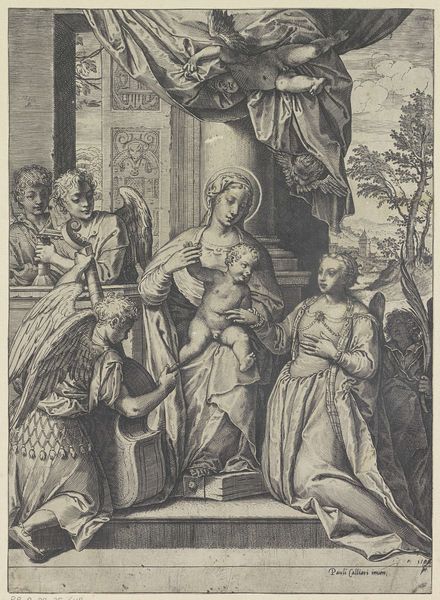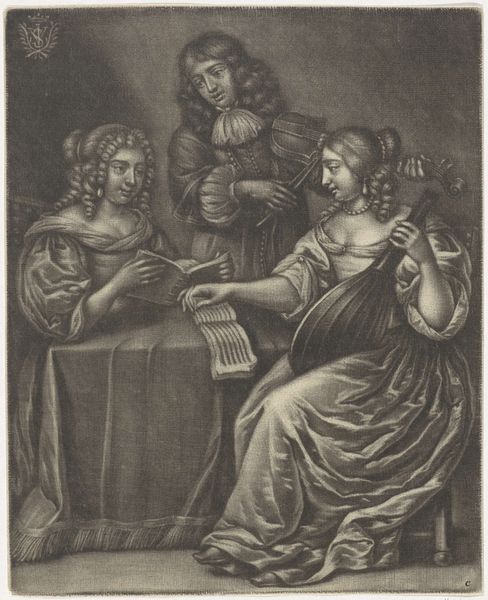
Heiligen Paulus, Johannes, Cecilia, Petrus en Maria Magdalena 1581 - 1656
0:00
0:00
nicolaesdebruyn
Rijksmuseum
print, engraving
#
baroque
# print
#
landscape
#
figuration
#
history-painting
#
engraving
#
sword
Dimensions: height 259 mm, width 158 mm
Copyright: Rijks Museum: Open Domain
Editor: This engraving, "Heiligen Paulus, Johannes, Cecilia, Petrus en Maria Magdalena," created sometime between 1581 and 1656 by Nicolaes de Bruyn, depicts a grouping of saints. The expressions seem quite melancholic, even solemn. What do you see in this piece beyond the immediate representation? Curator: This engraving offers a rich site for intersectional analysis. Note the way the piece centers Cecilia, the patron saint of music. While the traditional reading emphasizes religious piety, we can also see a commentary on the power dynamics embedded within the church and its representations of women, who were both revered and restricted. What does the inclusion of specific objects – the sword, the musical instruments, the chalice – tell us about the narrative being constructed around these figures? Editor: I see what you mean. It's not just a straightforward depiction of saints; the objects symbolize their roles and, perhaps, the limitations placed upon them. The contrast between the ethereal angels above and the grounded saints feels especially charged now. Curator: Precisely. Consider also the historical context – the Baroque period's emphasis on drama and emotion, potentially reflecting the Counter-Reformation's efforts to reassert the Church’s authority. How might this print function as both a devotional object and a tool for ideological shaping? Editor: I hadn’t considered the Counter-Reformation's influence so directly. It adds a layer of understanding about how art was used to reinforce specific beliefs. Curator: And notice who gets to hold power – Paul with the sword – versus who holds symbols of creative, but contained, power, like Cecilia's instrument. It raises questions about whose voices were amplified and whose were suppressed in that era. It's fascinating how a seemingly straightforward religious image can reveal so much about the complexities of power and representation. Editor: This has completely shifted my perspective. I now see how much historical and social context is embedded within the work, and how carefully we need to examine those symbols. Thanks for illuminating that for me.
Comments
No comments
Be the first to comment and join the conversation on the ultimate creative platform.
